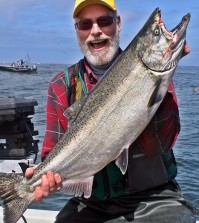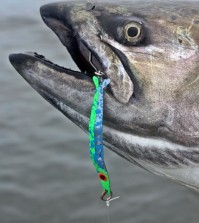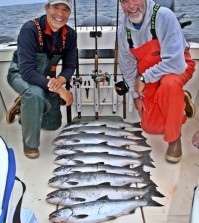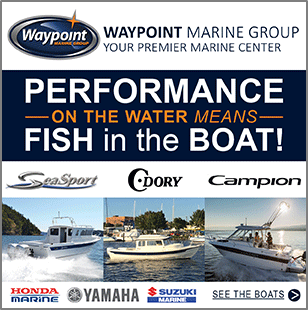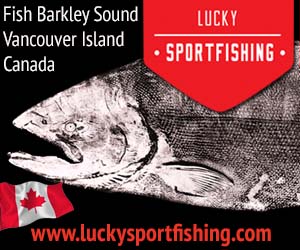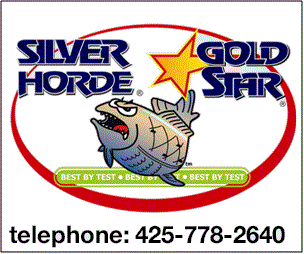Early Westport Chinook

Westport is one of my favorite fisheries. For early Chinook it can’t be beat. The “early” season generally opens in mid to late June and from the get go can be incredible. Techniques for these fish typically varies from your summer and fall ocean fishing, but get it right and you’ll have fish in the boat.
These early Chinook are not only feisty but they are super aggressive and are on the hunt for an easy meal. They need that extra food to pack on the pounds as they make their way down to the Columbia River. We may not see the slabs coming down like later in the season, but there’s nothing wrong with a teener chrome Chinook and they’ll put up a fight compared to twice of that of a late fall fish. With over 677K predicted to be heading down the coast there should be plenty of action during the June Select Harvest Chinook season.
I spoke with Kevin Lanier, fellow Salmon University Instructor, and he adds, “This is a really fun fishery. After a winter of Blackmouth fishing this warms not only the body but soul. It gets the excitement going with the anticipation of another Salmon season upon us. These fish consistently run 12 to 18lbs and have attitudes like 40lb’rs.”
2012 Washington Fisheries Creel reports show that during this time period last year the average was nearly 1 Chinook per angler. That may not seem good, but if you know how to target these fish this could equate to not only your two fish limit, but many released fish as well.
Because of run timing, Westport lies right within the heart of the run during this early opening. On the other side of the run would be Ilwaco with the early fish (good second choice to Westport), then La Push and Neah Bay which may have already experienced the height of these early fish during the May early opening. Not to say these other ports won’t produce fish, it just may take a little more to find the good numbers of fish.
Out on the open ocean schools of salmon will be traveling and eating on the run. We’re not looking for “holes” or structure, drop-offs and such that will hold the fish. Instead we’re looking for travel lanes. Think of the depth contours as lanes of highway with the fish traveling from Neah Bay all the way down to Ilwaco. You’ll be heading west coming out of Westport, so you’ll essentially be cutting across the traffic (of fish). Once you locate fish, wither via fish finder, birds, or other boats hooked up, turn “with” the tide and troll North/South. In doing so you’ll be moving with the fish and are more likely to encounter multiple fish rather than the occasional fish. Not that it’s hard to forget, but always remember to be extremely careful when crossing the bar.
Lanier has the same philosophy, “Look for Bait! Bait! Bait! These early fish are eating machines. These fish tend to concentrate around schools of bait no matter how small the bait ball is. If the bait is on the surface troll the outside of the school, do not go through it.”
In Puget Sound everyone has “their” GPS spots. Out in the Ocean GPS spots are great, but more importantly is once you find out how deep the water is where the fish are traveling, you’ll want to stay along the same depth contour, as the majority of fish will be traveling at the same depth.
At Westport it’s easy to find your depth – as you head out West the ocean gradually becomes deeper. No canyon or shelves to contend with until you are over the Halibut grounds. In general these early fish will run somewhere between the 120 and the 200 feet contour lines. Summer fish I like to push out further starting at 180 and going to 220ft. Out of the other ports you’ll need to pay more attention to the contours of the bottom. Once you locate fish, try and run North/South with them maintaining those travel lanes with the tide.
Lanier adds, “These early fish tend to run in the shallower water 120ft of water or less. Unfortunately this is where the crab pots are. Funny thing though, Crab pots have lots of Bait which I believe starts the food chain process. Be careful if you are fishing around them. The ropes are not always straight up and down”.
The “other” depth you’ll need to be aware of is how deep the fish themselves are running. Again the game is changed with these early fish. For the most part, concentrating near the surface is going to produce more fish. These fish are running and eating, so near the surface they’re finding more bait this time of year. I like to fish the top 30 feet of water to start out with, then drop one line down to 60 feet. If the fish finder has a different story, or I’m not locating the fish in numbers, I won’t hesitate to drop down to 90 to 120 feet, but for the most part that 30ft mark is magic.
Like bait? So do I. But during this early season spoons can actually outfish bait or hootchies. I’ll use an 11” Pro Troll Flasher in Green Splatterback, Green Coyote or Purple Haze followed by a 3.5 or 4” Silver Horde Kingfisher Spoon tied 55 inches behind. Size of the spoon is determined by the size of the bait in the area. Smaller bait, smaller spoon, larger bait, larger spoon… pretty simple. Make sure and scent your spoon, leader and flasher! You don’t need to gunk it on, but make sure there’s plenty of scent to mask your human stench. As far as spoon colors, I do have my favorites, Purple Haze, Green Haze, Green Spatter and Blue Spatter – all in UV finish. Lanier likes the Cookies and Cream and will also fish Coho Killers and Tailwaggers along with the Kingfisher spoons.
If not running a downrigger, try what Lanier suggests, “Small herring or anchovies fished behind a deep six can be deadly too. Smaller baits this time of year work best.”
As far as trolling speed “Slow is a myth in the ocean. Trolling up to 3 mph works well but I try to stay in the 2 to 3 MPH” says Lanier.
While you’re out there pay attention to any “special” openings. Hopefully there’ll be another Halibut opener you can take advantage of while you’re on the water.
The last few years this fishery has been at its best during the first few weeks of the opener. Most of these fish are late running Springer’s or early summers. We have found some to be 2 year old fish that seem to be feeding and growing in the local waters. This is indicated by the chip planted in their noses. These fish seem to hit like Puget Sound Blackmouth but once they realize they are hooked they run and fight like August Kings. These are by far the best eating fish of the year, especially if they are a springer.
Get a jump on the kings this year – fish the early run, you won’t be disappointed.




